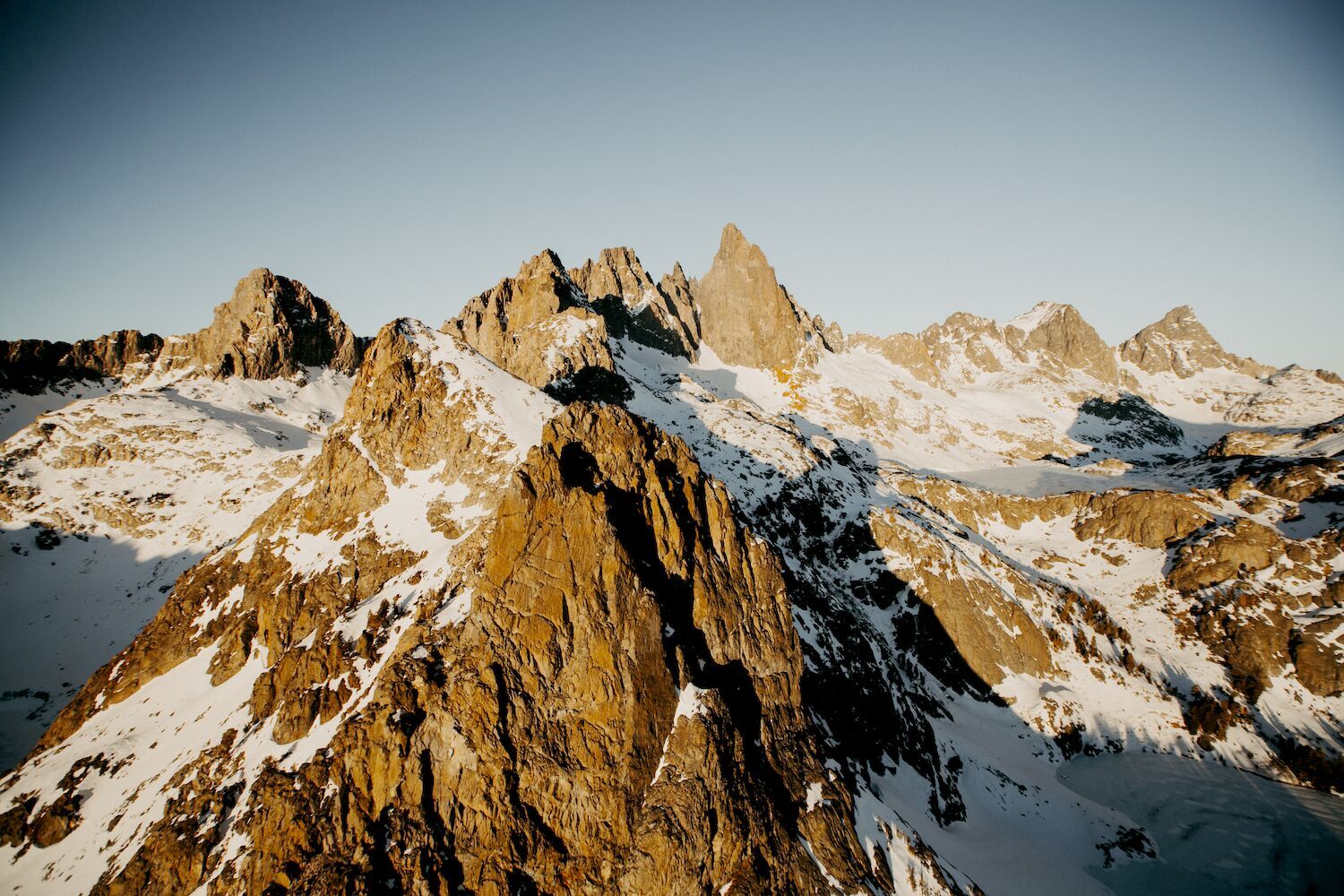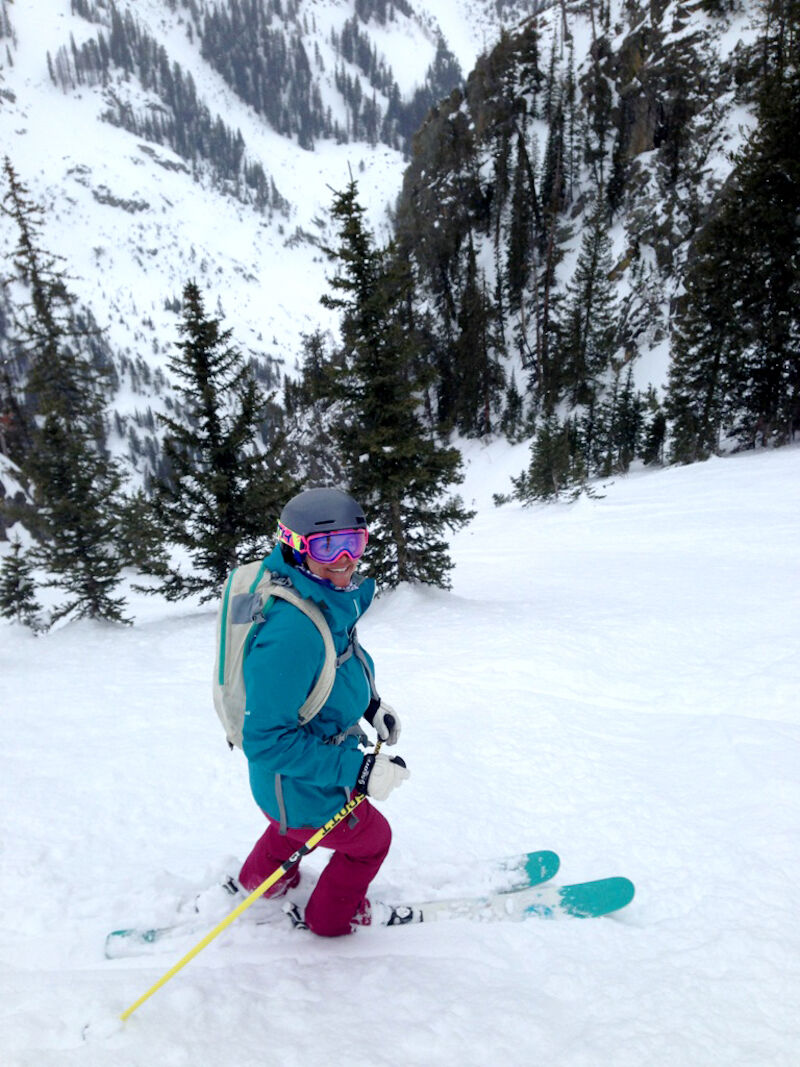
Mammoth mountain
Courtesy of Mammoth Mountain
Friday afternoon, mid-January in La Jolla, the sun beating down as if seasons hardly mattered. Students on longboards glided across the UCSD campus, making weekend plans for the beach. A salt breeze drifted in my window as I packed a bag of winter layers, mittens, goggles, and beanies, along with my snowboard and boots. I hauled my gear to the other side of campus to meet up with a couple dozen friends of the same questionable mind. It was 2006, a massive winter. Storms were hitting hard on the Sierra Nevada. Our plan was to follow the snow. All of us outliers, searching for winter in a land of eternal summer.
I grew up in Lake Tahoe and learned how to ski shortly after I could walk. In high school, I started snowboarding. Back then, all I’d ever known were winters that buried me in snowbanks three times as tall as I was. So the moment I graduated high school, I moved as far away from the snow as I could—while still getting that in-state tuition.
At first, San Diego was a welcome reprieve from my small hometown in the mountains. But when snow started to fly in the Sierra, I felt adrift without the grounding power of cold days. I felt lonely without a crew of friends to lead me into the mountains.
Then, one day, I walked past a small table with a sign-up sheet for the UC San Diego Ski and Snowboard Team. They were kids like me, strung between two worlds: the sea and the snow.
We didn’t have coaches. We didn’t wear spandex. We joined the team because we simply wanted to ride Mammoth, one of the best ski resorts on the planet. And after the lifts closed, celebrate our days late into the night. That’s a skier’s dream. And we were willing to sacrifice our weekends and suffer long, tedious drives up the Eastern Sierra for it.

The author on one of her countless pursuits of “water and gravity.”
Courtesy of Julie Brown Davis
Skiing and snowboarding have never been affordable. But there are ways to skimp and scrape and make ski bumming work for a student’s budget. Each winter, the captains of the team would sign a ski lease in Mammoth, hoodwinking the landlords, and we’d cram three dozen college kids into a tiny A-frame. Split 50 ways, our lease and van fees added up to only a few hundred dollars for the entire year.
The ski resort also gave us discounts on lift tickets because we were part of a Southern California league of ski teams, joined by Cal Poly, UCSB, UCLA, USC and San Diego State.
Every weekend, a different school would host a party—everyone wearing neon ski jackets from the ’80s. The ski team was an anti-fraternity, a social club of dirt bags. We called ourselves Kappa Tappa Keg. Our hazing ritual involved chugging questionable booze out of a bag. It was a club founded on a silly pastime that involved stuffing your feet into extremely uncomfortable boots, going outside in weather conditions that would make most people question your sanity, and strapping into one or two planks of wood. All for a thrill. That brief moment of weightlessness when you drop in at the top of the slope.
The drives to Mammoth were brutal. What should have been a six hour drive would easily stretch to nine in Friday traffic. By the time we pulled into the icy driveway of the A-Frame, I was exhausted and bolted for one of the two bedrooms upstairs. Sleeping bags were already lined up wall to wall, but I found a sliver of space to roll out mine near the door.
I remember this particular weekend well because the air inside the house was icy cold and, sure enough, the captain of the team announced the pipes had frozen. Frozen pipes meant no plumbing. Which meant we had to ration water bought in plastic jugs from the grocery store. Which meant we had to pee outside. Mercifully, the house was a block from the ski lodge, where we could use the public restrooms for anything else. Too tired to care, I fell asleep quickly.
Saturday morning came fast. I scooped up a breakfast of instant oatmeal, pulled on my layers, and headed for the resort. The chairlifts carried us to the top of the Sierra Crest, where views stretched out in all directions. I could see the jagged tooth-like ridge of the Minarets, the ancient seabed of the Great Basin to the east, and westward, the rolling slope of the Sierra descending toward the Pacific. Mammoth Mountain was founded in 1953 by Dave McCoy, a true visionary who saw a future and potential on a mountain buried beneath an average 30 feet of snow every winter. Today, more than two dozen lifts drop skiers and riders above 3,500 acres of choose-your-own-adventure terrain.
My time on the ski team was only the beginning of a decade-plus devoted entirely to snowboarding and skiing. With the time and effort I’ve invested in this weird pursuit of frozen water and gravity, I’ve had the chance and privilege to ski across the globe. Mammoth stands apart because of the way the wind blows in every night, buffing the snow until it’s as smooth as a sheet of paper.
Come morning, you can draw whatever line you can imagine on its slopes. The same forces that dictate waves in the ocean deliver snow to the mountains. It’s a coastal snowpack that gives back whatever you give it. Speed. Stability. Deep carves down steep chutes. It’s why I keep coming back to Mammoth for more, every year. It’s a love for a place and a time that began in college.
PARTNER CONTENT
By Sunday afternoon, the mounds of snow outside the A-frame were polka-dotted with yellow spots. We piled back into the van, this time with wind-chapped cheeks and sore legs. We pulled out of the parking lot beneath the pines and drove south, ocean bound.
















